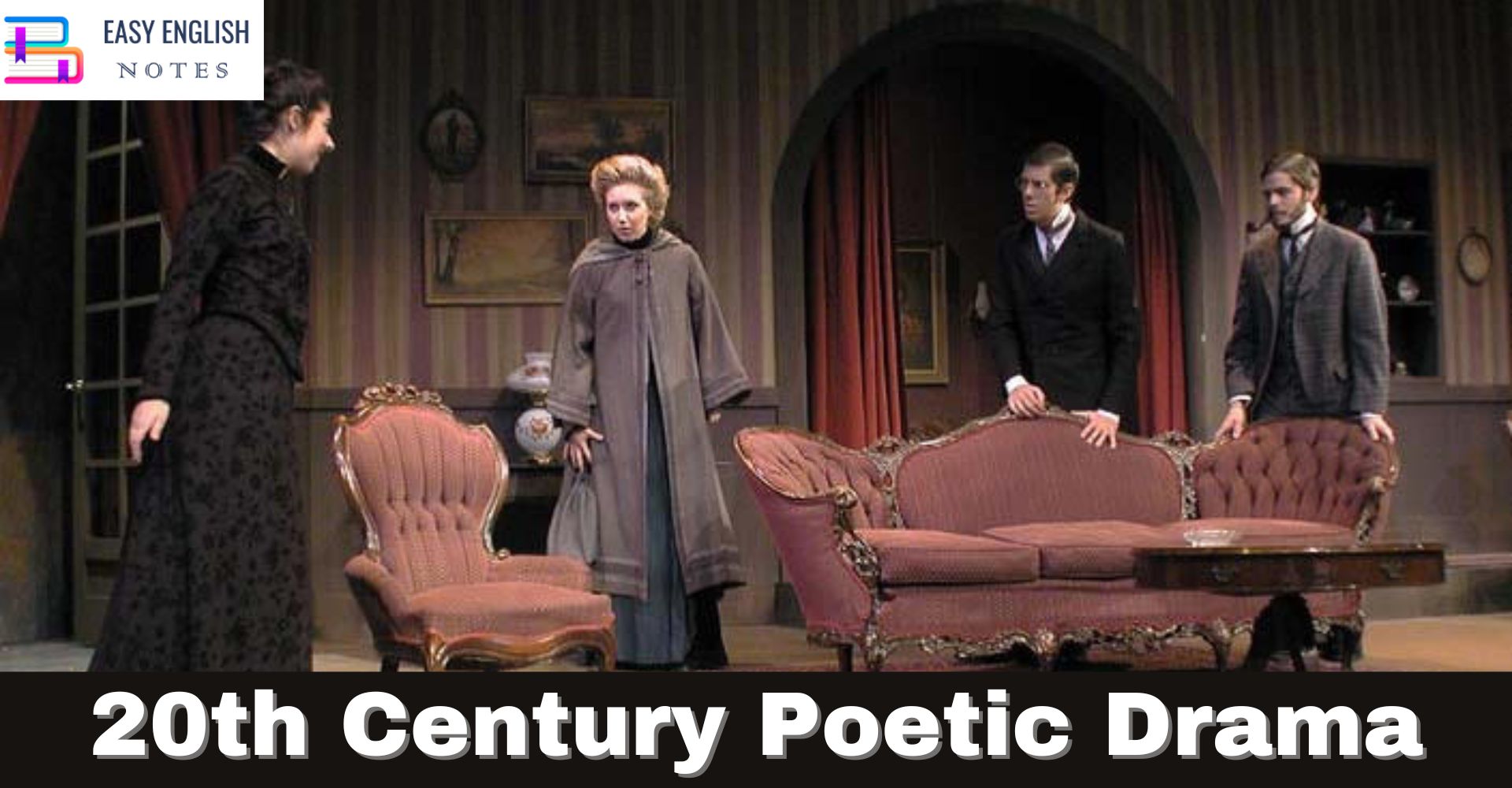The poetic drama had a late start in England. During the thirty years from 1890 to 1920 the pure poetic play was almost non-existent in England. However, in Ireland, it attracted some of the Abbey theatre authors. Stephen Philips remained strictly faithful to the verse form. His Paolo and Francesca, which was modelled upon Dante’s famous episode in Inferno, was a great success in 1900. His other plays were Herrod, A Tragedy, Ulysses, The Sin of David and Nero. John Drinkwater also endeavoured to re-establish the poetic play in his earlier career. His notable plays Rebellion and The Storm are written in this style. W.B. Yeats, the great poet, whose work belongs to the Irish Literary Movement and the Abbey Theatre also wrote plays in this style. His finest achievement in this sphere is The Countess Cathleen J.M. Synge is the other important name in the history of the poetic drama. He evolved a new form more closely in accord with the spirit of his age. He contributed immensely to the development of Irish school of imaginative plays. His Riders to The Sea and The Shadow of the Glen are masters in prose-poetry.
Also Read :
- Compare Hamlet with Macbeth, Othello and other Tragedies
- “The Pardoner’s Tale” is the finest tale of Chaucer
- Prologue to Canterbury Tales – (Short Ques & Ans)
- Confessional Poetry – Definition & meaning
The modern poetic drama in England owes its steady development to Gordon Bottomley, Abercrombie, T.S. Eliot and W.H. Auden. Abercrombie and Bottomley came forward for the rescue of the English dramatists when it was on the verge of decline. Abercrombie tried to deepen the earlier verse-forms to make them more vital means of dramatic expression. Debora, The Adder, The End of the World, The Staircase, The Deserter and Phoenix are his Amorous plays in this style. Abercrombie endeavoured to bring his poetry into close contact with reality who appreciated and who knew the stage so well. Bottomley tried to make a new start. He looked to the classical drama of Greece. His most celebrated plays are King Lear’s Wife, The Crier by Night, Midsummer Eve, Laodice and Danae and Kate Kennedy. Eliot’s Murder in The cathedral is a landmark in the history of the modem poetic drama. Here in it is applied poetry to the stage most powerfully and artistically. There is real exhibition of the emotional power in the play). It has been a great success ever since its first appearance in 1935. Eliot’s Family Reunion is another beautiful play. W.H. Auden and Christopher Isherwood produced The Dog Beneath The Skin in collaboration in 1935. Stephen Spender’s Trial of A Judge is another play worthy of note in this genre.
The basic features of poetic drama are its technicality, diction, language and the art of speaking. In fact, poetry is a powerful medium of expression. The rhythm of life can be best tuned to the conscience of poetic imagination. Further, the language in commonplace has a greater symphony which the dramatists of this genre have tried to capture. But by doing so, a fair amount of theatricality, poetry, action and characterization become weak in force. Truly speaking, in modern times, the poetic drama has lost its grandeur for proper theatrical exhibition as an action itself is the soul of drama, which has been violated. One cannot survive by violating it.
PLEASE HELP ME TO REACH 1000 SUBSCRIBER ON MY COOKING YT CHANNEL (CLICK HERE)











